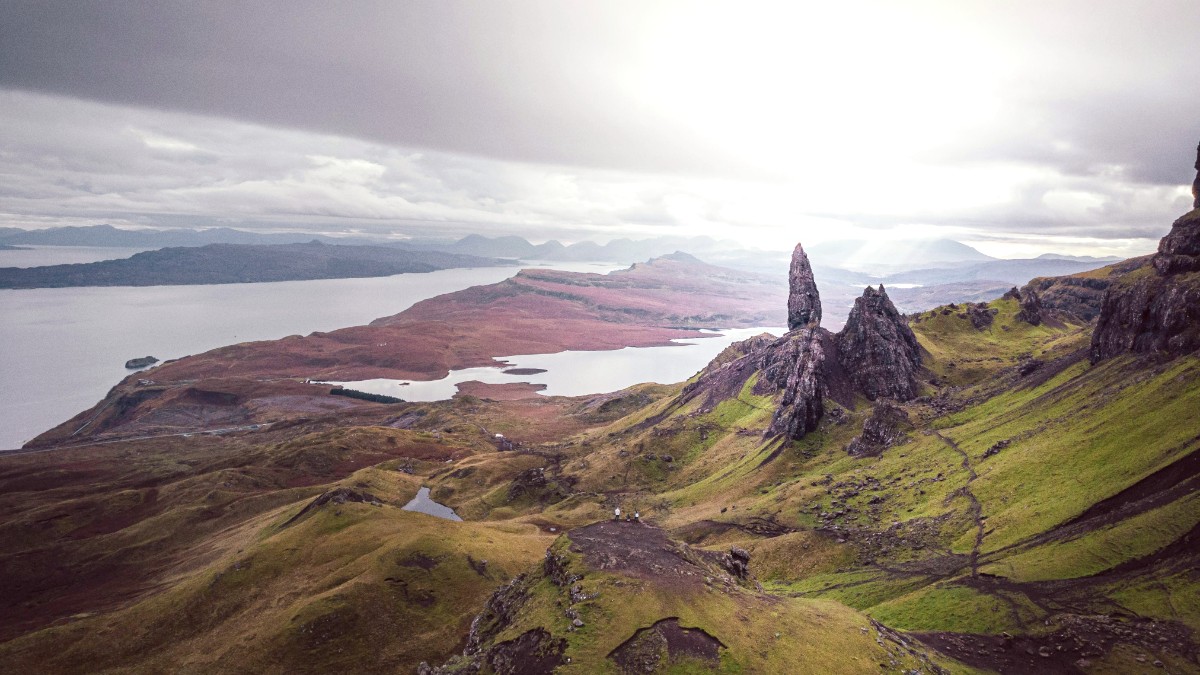
Highlands And Northern Islands, Scotland
It is a destination that whispers tales of Vikings, offers close encounters with wildlife, and invites discovery of a culture built on resilience and community. Await an adventure to an island world that truly feels apart, where every view promises grandeur and every encounter presents warmth.
The Shetland Islands form an archipelago in the North Atlantic Ocean, positioned north-northeast of mainland Scotland. This remote location places them significantly closer to the Faroe Islands and Norway than to the Scottish mainland. The archipelago includes about 100 islands and islets, with only 15 inhabited.
Shetland's total land area spans 1,466 square kilometers (566 square miles). Its elongated shape, with numerous deep sea inlets known as "voes," frames an intricate and extensive coastline. The islands lie on the subpolar oceanic climate zone, a classification describing their cool, often windy, and generally wet conditions year-round. This climate sees strong maritime influence, moderating winter temperatures but limiting summer warmth. The northern latitude also brings significant daylight hour variations, with very long summer days and short winter days, each presenting a distinct atmosphere.
Shetland's past feels rich and complex, profoundly shaped by its strategic location. For over 500 years, from the 9th century until 1469, Shetland was part of Norway. You will discover this heritage in the unique Shetlandic dialect, which keeps many Old Norse words and grammatical structures. Place names across the islands, like "Lerwick" (from Old Norse "Leirvík" meaning 'muddy bay') and "Sumburgh" (from "Sunnansborg" meaning 'south fortress'), directly reflect this deep Scandinavian root.
In 1469, Shetland was transferred to Scotland as part of a dowry for the marriage of King James III of Scotland to Margaret of Denmark. Despite this transfer, the Norse connection remained strong, contributing to Shetland's distinctive cultural identity, which differs from mainland Scotland. The islands have a strong maritime history, with fishing, whaling, and shipping forming the backbone of their economy and culture for centuries. The sea always presented both sustenance and a formidable challenge.
Part of Norway, strong Norse cultural links.
Pledged to Scotland as part of a royal dowry.
Fishing, whaling, and shipping shape island life.
Base for the "Shetland Bus" operation, a lifeline to Norwegian resistance.
Jarlshof shows 4,000 years of human settlement.
During World War II, Shetland held an important strategic role. It served as a base for the "Shetland Bus" operation, an undercover naval operation. This operation bravely transported agents, supplies, and refugees between Shetland and Nazi-occupied Norway, becoming a lifeline for the Norwegian resistance. This period cemented a bond between Norway and Shetland that remains strong today.
Archaeological sites across the islands offer glimpses into this long and varied history. Jarlshof, for example, is a testament to 4,000 years of human settlement, uncovering layers of human occupation from the Bronze Age to the medieval period. These historical layers present a profound sense of continuity and resilience, inviting visitors to walk through millennia of human endeavor.
The deep Norse influence, combined with the later Scottish transfer, shapes Shetland's unique cultural identity. This blend creates a distinctive character that sets Shetland apart from mainland Scotland, visible in its language, traditions, and festivals.
Always consult official sources like the UK government website and local Shetland tourism information before your trip. Information can change.
Shetland is characterized by remote, rugged, and dramatic landscapes. Towering sea cliffs ascend directly from the ocean, shaped by relentless waves and wind. Expansive moorland stretches across the interior of the islands, dotted with freshwater lochs and covered in heather and peat. Numerous pristine beaches, often surprisingly sandy and sheltered, call for quiet exploration. These diverse landscapes offer a visual feast for travelers seeking wild beauty.
The islands are globally noted for abundant wildlife. They host vast colonies of seabirds, marking them a premier birdwatching destination. You can observe puffins with their brightly colored beaks, elegant gannets diving for fish, and noisy guillemots nesting on precarious ledges. Marine mammals also thrive in the surrounding waters. Common and grey seals often bask on rocks near the shore, while playful otters may surprise you along coastal areas. Various whale and dolphin species, including orcas, make appearances, especially during summer months. Wildlife enthusiasts find Shetland a paradise, presenting unparalleled opportunities for observation and photography.
Witness thousands of seabirds, including puffins and gannets, nesting on spectacular cliffs.
Spot seals, otters, and various whale and dolphin species, including orcas.
Encounter the hardy native breed roaming freely across the islands' landscapes.
Traditional music, specifically the fiddle and accordion, presents a core part of island life. You can often discover informal music sessions in local pubs, a chance to hear tunes passed down through generations.